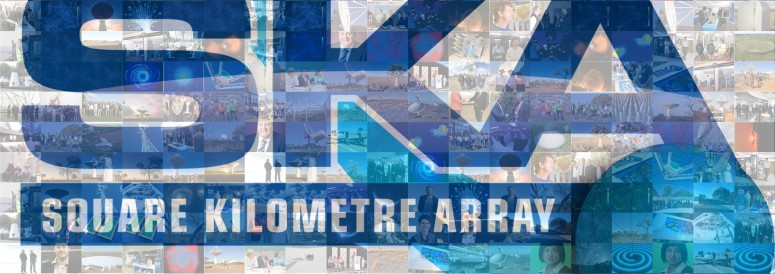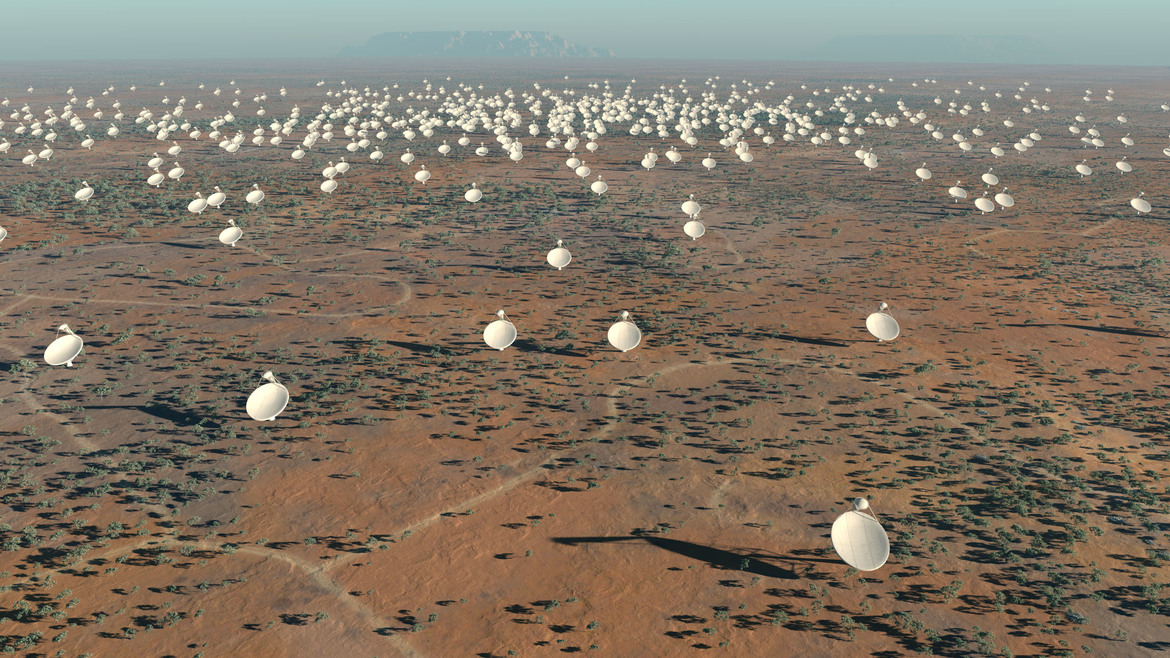Ten research centres and eleven Spanish companies will take part in the design of SKA, the biggest radio telescope in the world
Spanish researchers and engineers will participate in the design of antennas, data transmission, and telescope management and monitoring software
Spanish researchers and engineers will participate in the design of antennas, data transmission, and telescope management and monitoring software
11.04.2013. The teams responsible for the definitive design of the Square Kilometre Array (SKA) were announced today. This starts a new phase in the construction of the biggest and most sensitive telescope in the world. More than three hundred and fifty scientists and engineers from one hundred institutions in eighteen countries will be responsible for the definitive design phase, a scientific and technological challenge involving twenty one Spanish teams.

Like other projects of similar size--the Large Hadron Collider, for example, or certain space projects--SKA has been divided into batches of work--eleven in all--which will be managed by international panels of experts. The eleven designated panels will have three years to find optimal solutions for the development of SKA, which will begin in 2017.
"This is a level of commitment seen only in revolutionary projects!" says Phil Diamond, director general of the SKA organization. The funds obtained for this phase add up to one hundred and twenty million Euros, of which two and a half million come from Spanish institutions.
"Spanish participation is an indicator of excellence for Spanish research centres, universities and businesses," says Lourdes Verdes-Montenegro, scientist at the Institute of Astrophysics of Andalusia (IAA-CSIC) and head researcher at the VIA-SKA project, financed by the Spanish department of economy and competition (MINECO) and intended to study and promote Spanish technological participation in SKA.
"In only two years we have gone from proposing one-time collaborations to taking part in almost all the consortiums and, for lack of specific funding, research groups and businesses have vowed to grant two and a half million Euros for research from their own resources. It is a victory for the Spanish teams," the researcher concludes.
Spanish researchers and engineers will participate in the design of antennas, data transmission, signal processing and correlation, software for scientific data processing, and telescope management and monitoring software; they will also partake in the supply of energy for the infrastructure and contribute their experience in the field of renewable energies.

The Spanish research centres involved in the design phase are The Institute of Physics of Cantabria (IFCA-CSIC), the Department of Industrial and Telecommunication Engineering of the University of Cantabria (DICOM-UC), the Public University of Navarra (UPNA), the Integrated Systems Laboratory of the Polytechnic University of Madrid (UPM), the National Astronomical Observatory (OAN-IGN), the University of Granada (UGR), the Institute of Astrophysics of Andalusia (IAA-CSIC), the National Centre for Supercomputation (BSC), the Supercomputation Centre Foundation of Castilla y León (FCSCL) and the Centre for Energetic, Environmental and Technological Research (CIEMAT).
The eleven technological businesses are: TTI norte, Anteral, DAS Photonics, 7Solutions, ISDEFE, GTD (through its German branch GTD GmbH), CSP Sunless (Vinci engineering), Aora Solar Spain, Torresol Energy, Arraela and iGrid-TD.
About SKA
About the SKA
The SKA project is an international effort to build the world’s largest radio telescope, with a square kilometre (one million square metres) of collecting area. The scale of the SKA represents a huge leap forward in both engineering and research & development towards building and delivering a radio telescope, and will deliver a correspondingly transformational increase in science capability when operational.
Deploying thousands of radio telescopes, in three unique configurations, which will enable astronomers to monitor the sky in unprecedented detail and survey the entire sky thousands of times faster than any system currently in existence. The SKA telescope will be co located in Africa and in Australia. It will have an unprecedented scope in observations, exceeding the image resolution quality of the Hubble Space Telescope by a factor of 50 times, whilst also having the ability to image huge areas of sky in parallel. With a range of other large telescopes in the optical and infrared being built and launched into space over the coming decades, the SKA will perfectly augment, compliment and lead the way in scientific discovery.
The SKA Organisation, with its headquarters at Jodrell Bank Observatory, near Manchester, UK, was established in December 2011 as a not-for-profit company in order to formalise relationships between the international partners and to centralise the leadership of the project. Ten countries are currently members of the SKA Organisation – Australia, Canada, China, Germany, Italy, New Zealand, South Africa, Sweden, the Netherlands and the United Kingdom. India is an Associate Member. Further countries have expressed their interest in joining the SKA Organisation in the coming years.

More info about SKA: http://www.skatelescope.org/
More information in: www.skatelescope.org
